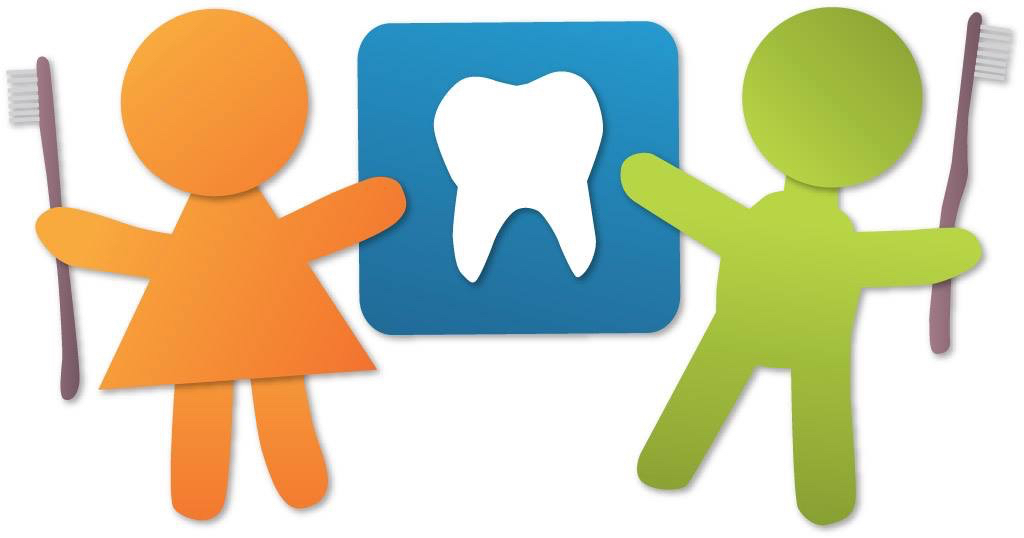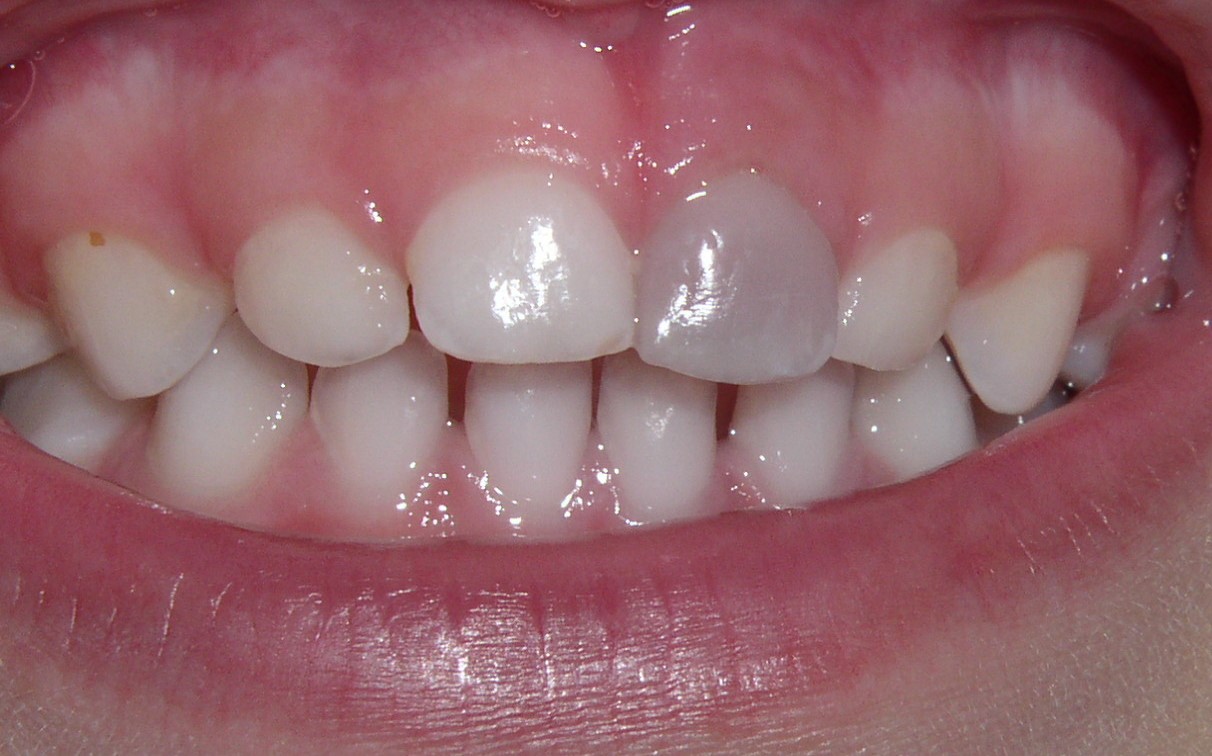Help! My child's tooth is turning gray! (or yellow, pink, or black)
Color Changes of Primary Teeth - Yellow/Pink/Gray/Black, from trauma
When your child's primary teeth are traumatized during an accident, a change of color is a common result. A few days or weeks after a traumatic incident, the affected tooth/teeth may begin to change color, ranging from yellow to dark gray. The color change can be quite subtle or very apparent (almost black). This color change is a result of damage to the pulp (neve) tissue inside your child's tooth during the accident. As the pulp is attempting to heal itself, we see the changes through a difference in tooth color. This is similar to skin bruising.
Treatment for a color change of your child's tooth is most often simply observation of the tooth. Sometimes, the tooth can recover, and the color change will reverse itself, returning to almost the original appearance of the tooth. Other times, the color change may be permanent. At follow up appointments and during regular checkups, your child's tooth/teeth will be monitored for signs of pulpal changes. Partial or complete root canal treatment, if necessary, will be completed on his/her tooth/teeth.
A color change of a tooth can often be associated with a dental abscess. The "pimple" or "bubble" seen above the tooth is an infection (abscess). If you see this in your child's mouth, call our office for an appointment. In most cases, the tooth will have to be extracted. Lack of treatment can lead to more serious problems including damage to the permanent dentition and facial swelling.
Doctor Wang, Doctor Perea-Corkish, Doctor Gerodias and the other Doctors of Discovery Pediatric Dentistry make no warranties, expressed or implied, as to any results to be obtained from use of the information on this page. We cannot diagnose or treat patients over the Internet. Information on this site is for educational purposes only. You should not rely on this information as a substitute for personal, medical, and/or dental attention or diagnosis. Without all available information about a patient, it is impossible to make a diagnosis. Help and answers are in the form of general ideas. Only you, your dentist, and other necessary and qualified health care providers can make an appropriate treatment decision in an emergency or for everyday care and dental treatment.


